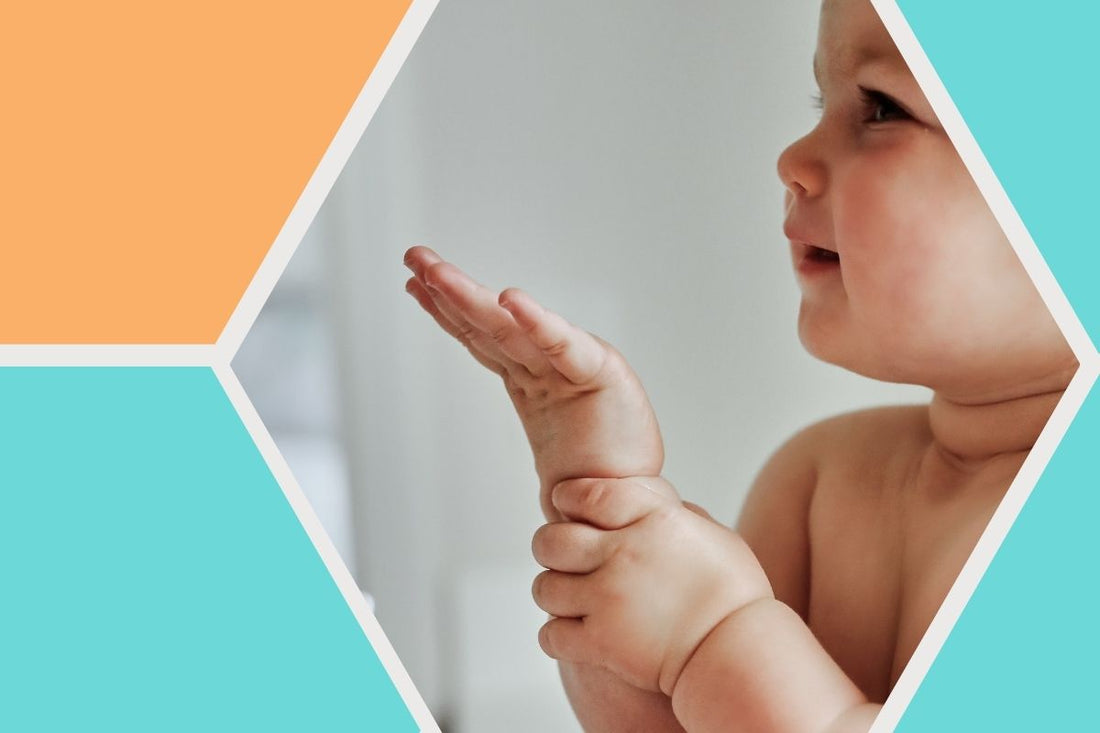
Common Types of Eczema in Babies
Share
Eczema is a group of conditions that are characterized by red, itchy, and inflamed skin. It can affect both children and adults, but it most commonly appears in children before the age of 5. If you suspect your child may have eczema, it’s a good idea to learn about the different kinds of this skin condition and associated symptoms. Understanding your baby’s eczema will help you avoid their triggers and manage symptoms.
What triggers eczema in babies?
It’s not entirely known what causes eczema in the first place, but triggers for flare ups include allergens, dry skin, irritants that come in contact with the skin, heat, and infections. A baby’s particular triggers may be different from others, so it’s important to pay attention to how your child’s skin reacts to their environment. This way, you can better manage the symptoms and prevent flare ups when possible.
Atopic dermatitis
According to the National Eczema Association, 13% of children under the age of 18 are affected by atopic dermatitis. This common type of eczema is caused by overactive immune responses to a child’s environment and activities within the body. The symptoms of atopic dermatitis include dry, itchy, scaly, and red patches of skin. Babies typically experience these patches on the scalp and on their face. After they begin crawling around 6 months of age, the patches are more likely to appear on their elbows and knees. If these itchy patches become infected, they can form a yellow crust or develop pus-filled bumps.
Contact dermatitis
Like atopic dermatitis, contact dermatitis causes patches of itchy red skin with a scaly look and feel. Contact dermatitis can also be painful and develop into swollen, blistering, and/or bleeding skin. As the name suggests, this type of eczema is triggered by the skin’s contact with irritating substances or common allergens. Fragranced soaps, lotions, cosmetics, urine, and even saliva are some of the substances that are known for causing contact dermatitis. With contact dermatitis, it’s often easier to pinpoint the substance or allergen that triggers the condition and avoid future exposure.
Dyshidrotic eczema
While dyshidrotic eczema is most common in young adults, babies and young children can experience symptoms as well. Dyshidrotic eczema is characterized by small, itchy blisters on the palms of hands, soles of feet, and the edges of fingers and toes. These blisters are typically painful and can get infected. Like the other types of eczema, triggers in the body and the environment cause flare ups. Triggers for dyshidrotic eczema include contact with metals, sweaty palms, and seasonal allergies. If your baby experiences a dyshidrotic eczema flare up, wash the affected area with a mild cleanser that is free of harsh chemicals and irritants. After washing, moisturize their skin with a fragrance-free lotion to help repair their skin barrier.
Seborrheic dermatitis, aka “cradle cap”
Seborrheic dermatitis, known as “cradle cap” in infants, mainly affects the scalp. It can also affect other areas of your baby’s body that are high in oil glands, like the nose, around the eyes, and their backs. Seborrheic dermatitis is known as dandruff when it occurs in adults and older children. Signs that your child is affected by this eczema are yellow crust, red skin with white or yellow flakes, pink patches that join with the red skin, and swollen areas of skin. This type of eczema isn’t typically painful for babies. The National Eczema Association recommends treating seborrheic dermatitis by applying a thin layer of moisturizing product on the affected area. This helps soften the scales and flakes before a bath to make removal safe and comfortable.
Takeaway
Although there is no cure for eczema, the best parents can do is educate themselves on the signs, symptoms, and potential triggers. If you are concerned about the state of your child’s eczema, see signs of an infection, or notice symptoms that last for more than a week, it’s always best to consult a doctor. As for at-home management, using products without irritants or harmful chemicals like NOLEO 3-in-1 diaper care can help prevent flare ups. NOLEO is approved eczema safe by the National Eczema Association, making it a great choice for babies who suffer from eczema.
Sources:
